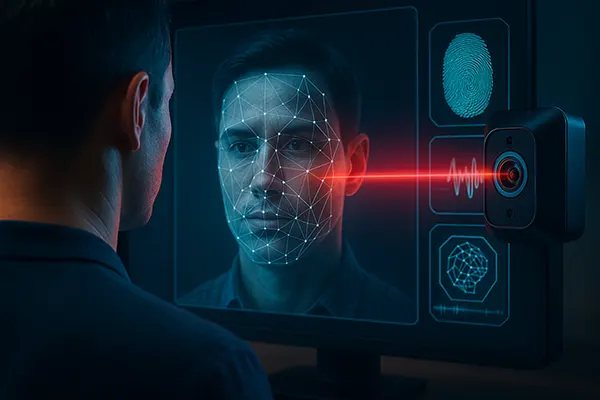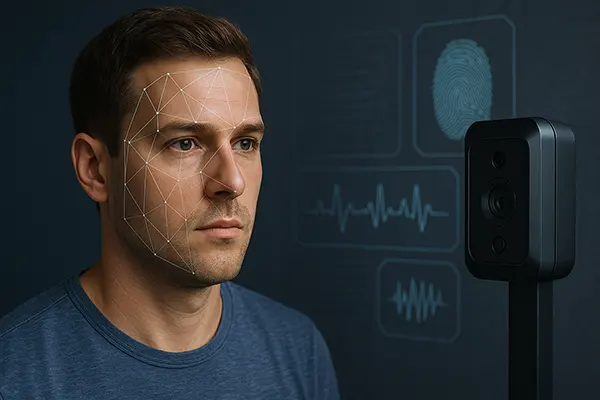Biometric identification has become one of the most reliable ways to confirm identity in modern societies. While in the past, passwords and physical documents were the main tools for verification, they are increasingly vulnerable to theft, duplication, and manipulation. By 2025, the concept of Biometrics 2.0 has emerged, marking a significant evolution from traditional fingerprint or facial recognition to a new era of multimodal, AI-driven systems that combine physical, behavioural, and even biological indicators. This transformation offers not only stronger protection but also greater convenience for everyday use, influencing industries from finance to healthcare and public administration. At the same time, new challenges related to privacy, ethics, and transparency require thoughtful solutions, ensuring these technologies benefit individuals rather than compromise their freedoms.
Emerging Trends in Biometrics
One of the defining characteristics of Biometrics 2.0 is the adoption of multimodal systems. Unlike earlier solutions that depended on a single unique trait, such as a fingerprint, modern identification often combines several identifiers including iris patterns, voice recognition, and vascular structures in the hand. This approach significantly reduces error rates and increases resilience against fraud, since replicating multiple biometric signals is far more complex than forging just one.
Artificial intelligence has also revolutionised the field by making systems adaptive and more precise. Advanced algorithms are capable of adjusting to natural changes in human features, such as ageing or facial hair growth, without compromising accuracy. Furthermore, AI enables the integration of contextual data, allowing real-time decision-making in critical areas like border control, hospital admission, and secure financial transactions. This adaptability makes biometric technology increasingly practical in fast-paced environments.
Liveness detection represents another critical development in recent years. Earlier models were vulnerable to spoofing attempts using photos, videos, or 3D masks. Today’s systems incorporate sophisticated sensors that measure depth, temperature, and micro-movements, ensuring that the data originates from a living person. This feature has become standard in airports, secure facilities, and consumer devices, significantly increasing trust in biometric identification across both personal and professional contexts.
Behavioural Biometrics and Daily Use
The evolution of biometrics goes beyond static identifiers, moving towards recognition of behavioural patterns. Behavioural biometrics analyse unique rhythms in typing, the pressure applied to touchscreens, gait analysis, and even patterns in the way individuals swipe or scroll on devices. These markers are subtle yet consistent, making them difficult for impostors to replicate. They add a constant verification layer that works in the background, providing security without creating friction for users.
In the financial sector, behavioural monitoring has already proven effective in reducing fraud. Banks and payment services are deploying systems that monitor unusual login or transaction behaviour. For instance, if someone accesses an account but their typing rhythm differs significantly from the genuine account holder, the system can flag the activity for verification before processing sensitive operations. This not only protects accounts but also strengthens customer confidence in digital services.
Healthcare applications are also expanding. Wearable devices now integrate biometric monitoring, enabling medical professionals to link patient data to a secure, verified profile. Walking style, heartbeat patterns, and other physiological signals are being used not only for identification but also for continuous health monitoring. This dual-purpose approach shows how biometrics can go beyond security and contribute to improving wellbeing in everyday life.
Privacy and Ethical Considerations
As the scope of biometric systems expands, so do concerns regarding privacy and data protection. Unlike passwords or tokens, biometric identifiers cannot be replaced once compromised, making data breaches particularly damaging. For this reason, organisations must invest in advanced encryption methods, decentralised storage, and strict access control systems to ensure the safety of personal information. Failure to do so risks long-term consequences for individuals and potential reputational damage for institutions.
Legal frameworks are becoming increasingly important. In Europe, the General Data Protection Regulation (GDPR) already treats biometric data as highly sensitive, placing strict conditions on its collection and use. Beyond Europe, many countries are drafting or updating national legislation to keep up with rapid technological progress. Clear legal boundaries ensure that biometric systems remain tools of protection rather than instruments of surveillance or discrimination.
Public debate often highlights the potential misuse of biometric surveillance in public spaces. While the technology can be invaluable for security, there is a risk of creating environments where citizens are monitored continuously without consent. Striking the right balance between innovation and civil rights has become one of the central challenges for policymakers, requiring collaboration between governments, technology developers, and civil society groups.
Building Trust Through Transparency
Widespread adoption of Biometrics 2.0 depends heavily on public trust. Transparency is a crucial factor in building that trust, as users need to know exactly how their data is being collected, stored, and processed. Clear explanations about algorithms, system functionality, and security measures help individuals make informed choices and feel in control of their identity data.
Independent auditing provides an additional safeguard. By allowing third-party organisations to verify the security and fairness of biometric systems, developers and service providers demonstrate accountability. Certification programmes and international standards are helping to ensure consistent quality across different markets, reinforcing public confidence in the technology.
Finally, the design of biometric solutions must prioritise user autonomy. People should have the ability to decide when and how biometric authentication is applied, rather than being forced into it without alternatives. Systems that respect user preferences and provide opt-out options are more likely to be embraced, as they align with principles of personal freedom and digital responsibility.

Future Applications of Biometrics 2.0
Biometrics 2.0 is expected to reshape many sectors beyond security. In transportation, airports and railway stations are increasingly adopting frictionless systems where passengers can pass through gates without showing tickets or passports, relying solely on biometric checks. This not only speeds up travel but also enhances safety by reducing the risk of stolen or forged documents being used.
In the healthcare industry, biometric systems play a growing role in safeguarding sensitive patient data and ensuring accurate treatment delivery. Linking biometric identifiers to medical records reduces errors, prevents fraudulent access, and ensures that care is delivered to the correct person. Personalised medicine, where treatments are tailored to genetic and physiological profiles, will increasingly depend on secure biometric verification.
The corporate sector is also evolving. Businesses are deploying biometrics for managing access to buildings, securing digital workspaces, and streamlining employee authentication. As hybrid and remote work models expand, reliable digital identity solutions are essential to prevent cyber threats. Biometric logins integrated with advanced cybersecurity frameworks are expected to become a standard feature of future workplaces.
The Road Ahead
The future of Biometrics 2.0 lies in deeper integration with emerging sciences such as biotechnology and neuroscience. Experimental approaches include identification through brainwave patterns and even genetic markers, though these raise complex ethical and privacy issues that must be carefully managed. Regulation and oversight will be critical to ensure that such technologies are not misused or applied without consent.
Artificial intelligence will continue to enhance biometric precision, minimising false positives and negatives. At the same time, decentralised identity management, where biometric data remains under user control rather than stored in centralised databases, is gaining momentum. This approach strengthens privacy while maintaining the benefits of rapid authentication.
Ultimately, the journey towards Biometrics 2.0 reflects a shift from identity verification as a simple one-off process to continuous, seamless authentication embedded into daily life. The challenge for the coming years will be to ensure that security and convenience do not come at the expense of privacy and human rights. If handled responsibly, biometrics can become one of the cornerstones of secure digital societies.



